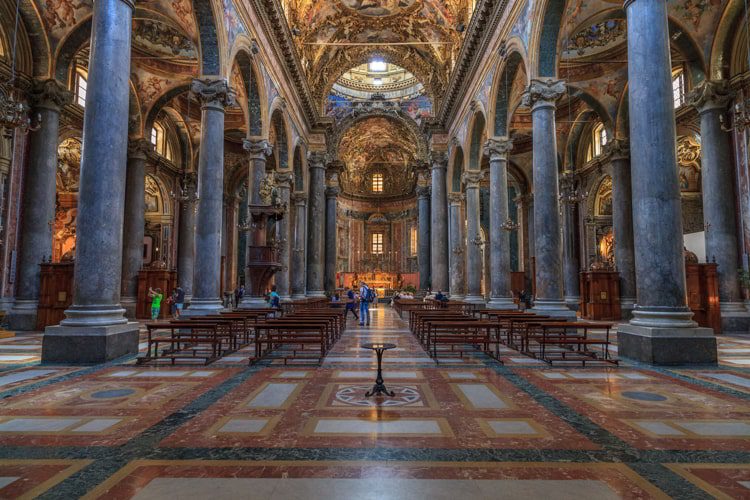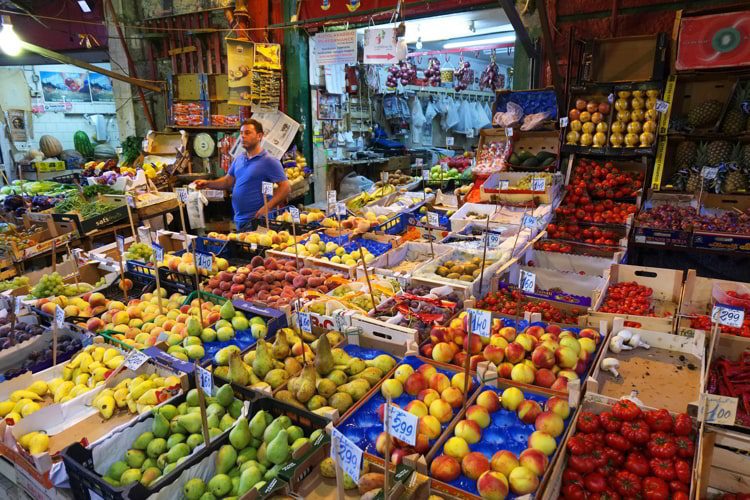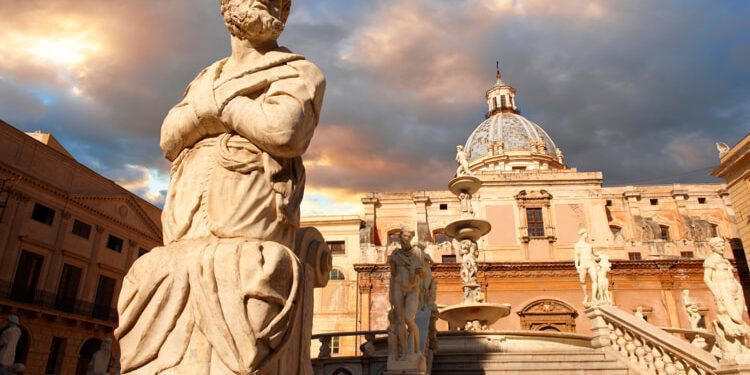Holy Roman Emperor Frederick II was an enlightened man.
Under his watch, Prussia was a land of tolerance.
All religions were allowed and respected, as was freedom of the press. A unified code of laws disallowed torture and protected individual rights without regard for class.
Frederick II’s military success expanded Prussia’s reach, and his domestic policies transformed that ever-expanding kingdom into an open-minded and forward-looking superpower.
Art and science, curiosity and discovery were valued and supported.
In Sicily, Frederick II presided over a court of poets and scholars and to Sicily he attracted the most talented and innovative men of the age. The combined efforts of the artists and architects Frederick II sponsored transformed Palermo into one of the greatest cities of history, a showcase of the best we humans are capable of achieving.
Frederick II died in 1250. For Palermo… indeed, for Sicily… it’s been downhill ever since.
All Italy suffers from long neglect, but nowhere more than Sicily. Palermo today is like a woman of a certain age—best viewed after dusk. In the bright light of midday, this once-glorious city is dirty and crumbling, unkempt and unpainted… unless you count the graffiti. “It’s street art,” my 21-year-old son pointed out in defense. And it’s everywhere.
But that’s only the street view. When you venture behind the palace walls and through the cathedral doors, it’s possible to glimpse Palermo’s lingering magnificence.

Church of St. Joseph of Theatines
Sicilians have a dramatic sense of pomp and pageantry and a love of over-the-top ornamentation, thanks probably to their Arab connections. Not only cathedrals and palaces but even much more modest private homes from centuries ago brandish gilded moldings and ornate mosaics. Traditional textiles feature bright, bold yellows, reds, blues, and greens.
But it’s all frozen in time.
Hundreds of years of decay were capped off last century by World War II.
“In 1943, everyone was here in Sicily,” one museum tour guide told us. “The Americans, the British, the French… all with their bombs. The damage was great.”
Buildings destroyed were replaced with modern construction.
“No one thought of trying to rebuild what had been bombed,” our guide explained. “Better to eliminate the rubble… to put the horrible experience behind us as quickly as possible.”
In the decades since, there has been little new built and virtually no rehabilitation. This city doesn’t have enough money to do anything but stand still.
This may sound grim and glum, and, I admit, my first impression of Palermo was bleak. I had no choice but to give her a chance to change my mind. We were booked in for two weeks, and, by day three, I was glad for that. We had to work for the reward, queuing and touring in stifling heat, but, after we’d seen the masterpieces inside the Church Santa Maria dell’Ammiraglio, climbed the tower of the cathedral for a view of the city’s ancient rooftops, and had the privilege of witnessing a symphony rehearsal in the Teatro Massimo, we were more sympathetic to Palermo’s hidden charms.
The city’s artistic achievements are concealed from street view, but life in Palermo is lived in plain sight. Food is a priority. The smell of roasting garlic fills the cobblestoned alleyways and squares by 10 a.m. Even in the poorest neighborhoods, open-air markets sell great varieties of fresh produce, including vegetables we couldn’t name. Hole-in-the-wall restaurants with three and four streetside tables offer the day’s catch perfectly prepared, and even the US$2 lasagna we tried because we couldn’t walk away from the chance to try US$2 lasagna was memorable in a good way.

By 3 p.m. each afternoon, the siesta seemed like the best idea anyone had ever had. After naps, we’d venture back out into the heat reminding ourselves that in this town prosecco is ever-present and excitingly cheap. The Libreria Dante café, down the street from our hotel on Via Maqueda on the corner of Quattro Canti, where we could buy a bottle of prosecco to share for 12 euro, became a favorite afternoon hangout.
We’d sip our sparkling wine while watching children passing by on bicycles and scooters, others kicking soccer balls back and forth as they progressed along the pedestrians-only thoroughfare. Mothers pushed babies in strollers or carried them in their arms. Old men smoked, boys ate ice creams. Young girls in short skirts and sleeveless halters walked alongside women in hijabs. A nod to Frederick II.
By 7 p.m. each day, Via Maqueda, the main axis of the city’s historic center, was packed with locals and tourists, like us, seeking shelter from the sun beneath café umbrellas and savoring this golden hour when the city’s rough edges were blurred just enough that you could imagine yourself enjoying her during her golden age.
Sincerely,

Kathleen Peddicord
Founding Publisher, Overseas Opportunity Letter










